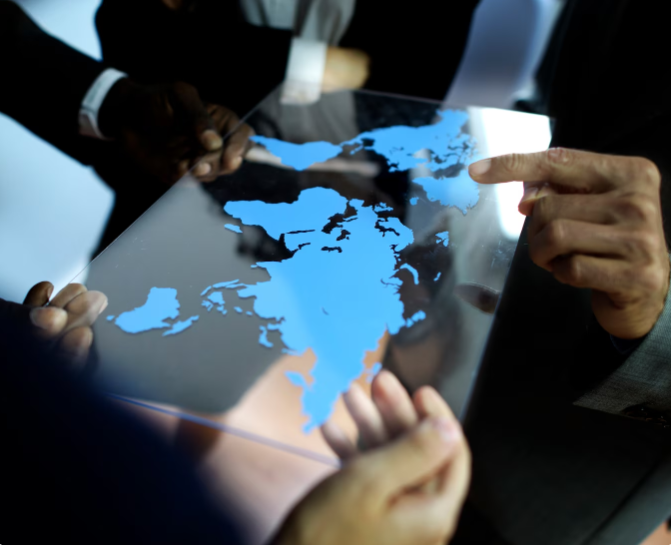
by Dulce Navarro | Jun 26, 2025 | Countries, Culture, Europe, Lifestyle, Traditions, Travel
Cultural Adaptation Guide for Expats in Europe
Moving to Europe as an expat offers exciting opportunities—but it also comes with its fair share of challenges. Navigating cultural nuances, establishing a new routine, and integrating into unfamiliar social norms can be overwhelming without the right guidance. This comprehensive guide will walk you through everything you need to know to adapt smoothly to European life, wherever your journey takes you.
1. Understanding the Diversity of European Cultures
Europe is not a monolith. Every country—and often, every region—has its own unique traditions, languages, and social expectations. Northern countries like Sweden and Denmark tend to value punctuality and privacy, while Southern nations such as Italy or Spain are known for their warmth and relaxed pace of life.
As an expat, research your destination in depth. Understanding a culture’s values—whether it’s Germany’s efficiency, France’s appreciation for formality, or Portugal’s love for community—will help you better anticipate and respect local norms.
2. Mastering Social Etiquette and Daily Norms
Small cultural missteps can lead to misunderstandings. Greeting customs vary widely: in France, cheek kissing may be common among friends, while in the UK, a handshake often suffices. Learn how to properly greet people, express gratitude, and behave in public spaces.
Also be aware of meal customs, tipping etiquette, and general personal space boundaries. In some countries, arriving late to a dinner invitation might be acceptable, while in others it’s frowned upon. A little cultural sensitivity goes a long way.
3. Navigating Bureaucracy and Paperwork
Administrative procedures in Europe can be notoriously complex. Be prepared for paperwork-heavy processes when applying for visas, registering with local authorities, or securing housing.
To make this transition smoother, work with a relocation consultant or expat advisor when possible. Understanding local laws, taxation, and insurance requirements is crucial—especially if you plan to work, start a business, or purchase property.
4. Building a Local Network
Isolation is one of the most common challenges expats face. Forming meaningful relationships is essential to adapting culturally and emotionally. Start by joining expat groups, local clubs, or international meetups. Many European cities have vibrant communities of foreigners who share similar experiences.
Learning the local language—even at a basic level—can significantly boost your ability to connect with locals and participate in the community. Don’t be afraid to make mistakes; the effort is almost always appreciated.
5. Embracing Local Lifestyle and Traditions
True cultural adaptation requires more than just surface-level interaction. Attend cultural festivals, sample regional cuisine, and take part in national holidays. These moments allow you to understand the soul of a country and experience it from the inside out.
Whether it’s celebrating Bastille Day in France, enjoying aperitivo in Italy, or dancing in Spain’s local fiestas, being present and involved helps foster a genuine sense of belonging.
6. Handling Culture Shock and Emotional Transitions
Even the most well-prepared expats experience culture shock. This can manifest as frustration, homesickness, or even resentment toward local customs. It’s important to acknowledge these feelings and know that they’re part of the adaptation process.
Maintain a healthy routine, stay active, and create a comfortable living environment that blends familiarity with your new surroundings. Journaling or speaking to a counselor who specializes in expat transitions can also be incredibly helpful.
7. Family and Education Considerations
If you’re relocating with family, research schooling options early. Europe offers a range of public, private, and international schools. Understanding the academic system, curriculum, and language of instruction will help ensure a smoother transition for your children.
Involving your spouse and children in cultural activities is also key. When every family member feels engaged and included, cultural adaptation becomes a shared journey rather than a solo burden.
8. Financial and Career Adjustments
Cost of living, salary expectations, and work culture vary dramatically across Europe. Understanding your host country’s labor laws, average wages, and social benefits can help you negotiate better and plan financially.
Some countries encourage freelance work or offer residency to digital nomads. If you’re employed by a European company, learn the unwritten rules of workplace hierarchy, communication, and punctuality to integrate more seamlessly.
Learning New Languages as an Expat: Strategies for Quick Success
Language is one of the most powerful tools for integration. Start with essential phrases and practical vocabulary that you’ll use daily—shopping, transportation, greetings, and small talk. Apps like Duolingo, Babbel, or language exchange platforms can jumpstart your learning.
Consider enrolling in in-person language classes, which also double as opportunities for social interaction. Set realistic goals: aim for functional fluency first, then work toward deeper comprehension. Most importantly, stay consistent and don’t be discouraged by mistakes. Persistence is key.
Watching local TV shows, reading children’s books in the local language, and speaking with native speakers all accelerate learning. Embrace the awkwardness—it’s a sign you’re growing.
Stay Connected for More Travel and Lifestyle Inspiration.
For more insights into travel, culture, and lifestyle tips, follow me on @salvadorordorica. If you’re seeking professional translation and localization services to enhance your global ventures, visit The Spanish Group — your trusted partner in bridging cultures worldwide.

by Dulce Navarro | Jun 24, 2025 | Business, Company, Countries, Culture, Traditions, Travel, Work
Cultural Heritage Preservation in the Age of Globalization
Globalization has transformed the way we communicate, trade, travel, and learn. It has brought people and cultures closer than ever before, opening doors to innovation and understanding. However, with this rapid connectivity comes a challenge: how do we preserve the unique cultural identities that define communities across the globe? As cities become more homogenized and global culture dominates media and commerce, the importance of preserving cultural heritage—both tangible and intangible—has never been more critical.
What Is Cultural Heritage?
Cultural heritage includes the traditions, customs, monuments, languages, crafts, and knowledge systems that are passed down from generation to generation. It is often categorized into two main types: tangible and intangible heritage.
- Tangible heritage: Historical buildings, artifacts, museums, books, and monuments.
- Intangible heritage: Oral traditions, performing arts, social practices, rituals, and languages.
This heritage forms the foundation of identity and continuity for communities around the world. It links people to their ancestors and their land, and it shapes how we interact with the world today.
The Impact of Globalization
Globalization can lead to both the enrichment and erosion of cultural heritage. On one hand, it enables cultural exchange and access to global audiences. On the other hand, it can threaten the uniqueness of local cultures through commercialization, urban development, tourism pressures, and the dominance of global media.
For example, traditional languages are disappearing at an alarming rate. According to UNESCO, nearly 40% of the world’s 7,000 languages are at risk of extinction. Similarly, local crafts, music, and oral histories are often overshadowed by global consumer trends and pop culture.
The Role of Technology in Preservation
Technology can be a double-edged sword—but when used mindfully, it becomes a powerful tool for preservation. Digital archives, 3D mapping of historical sites, AI language transcription, and virtual reality experiences allow future generations to access and learn from cultural heritage in innovative ways.
Examples of successful tech-driven preservation include the digital restoration of destroyed heritage sites in Syria and Iraq, and Google’s “Arts & Culture” platform, which makes global art and heritage accessible to anyone with an internet connection.
Community Involvement and Education
One of the most effective ways to preserve cultural heritage is by involving the communities to whom it belongs. Local leaders, elders, artisans, and educators play a critical role in passing on traditions and raising awareness about their importance.
Integrating heritage education in schools, organizing cultural festivals, supporting local museums, and funding artisan workshops are all ways to foster community pride and participation. When communities actively engage in preserving their heritage, they ensure that it evolves naturally without losing its essence.
Government and Institutional Support
Preserving cultural heritage also requires systemic support from governments, NGOs, and international organizations like UNESCO. Through legal protections, funding programs, heritage site designations, and cultural diplomacy, institutions can create environments where preservation is not only possible but prioritized.
For example, UNESCO’s World Heritage program recognizes sites of cultural and natural significance, bringing global awareness and often much-needed funding to support conservation efforts.
Business and Heritage: A Delicate Balance
Businesses, especially those in tourism, real estate, and retail, have a growing responsibility to respect and support cultural heritage. Sustainable tourism initiatives, ethical sourcing of traditional crafts, and local hiring practices can positively impact communities and preserve their identity.
Companies operating in multicultural environments must also understand the value of cultural sensitivity. Multilingual marketing, culturally aware branding, and inclusive hiring practices not only benefit communities but also help businesses thrive in diverse markets.
Individual Responsibility in Preservation
Every individual, whether an expat, traveler, business leader, or local resident, has a role to play in preserving cultural heritage. This can include learning local languages, supporting indigenous artisans, visiting museums, or simply being respectful and curious when encountering new traditions.
In an age where convenience and mass production often replace tradition and craft, choosing heritage over homogeneity becomes a conscious, impactful decision.
Learning New Languages as an Expat: Strategies for Quick Success
Language is at the heart of culture. For expats living abroad, learning the local language is a key step toward deeper cultural understanding and respectful engagement. Here are practical strategies for learning quickly and effectively:
- Start with Daily Practice: Commit to 20–30 minutes of focused study each day using apps like Duolingo or Babbel.
- Engage with Locals: Practice speaking with neighbors, colleagues, or through language exchange meetups.
- Use Labels and Flashcards: Label items around your home and use flashcards to reinforce vocabulary.
- Immerse Yourself: Watch local shows, listen to regional music, or follow social media in the local language.
- Take a Structured Course: Online or in-person classes can provide a strong foundation and support.
Mastering a new language not only enhances personal growth but also contributes to the ongoing preservation and appreciation of local culture. It’s an investment in both your experience and the community that welcomes you.
Stay Connected for More Travel and Lifestyle Inspiration.
For more insights into travel, culture, and lifestyle tips, follow me on @salvadorordorica. If you’re seeking professional translation and localization services to enhance your global ventures, visit The Spanish Group — your trusted partner in bridging cultures worldwide.

by Dulce Navarro | Jun 23, 2025 | Culture, Europe, Lifestyle, Traditions, Travel, Work
Wine and Work: Exploring Spain’s Vineyards as a Remote Worker
As remote work reshapes the global lifestyle, professionals are increasingly seeking destinations that blend productivity with leisure and inspiration. Spain, with its warm climate, vibrant culture, and renowned wine regions, offers an enticing environment for digital nomads. Imagine sending emails in the morning, touring vineyards in the afternoon, and enjoying local wines by sunset. For remote workers who crave balance, beauty, and great wine, Spain’s vineyards offer a uniquely enriching work-life experience.
Why Spain is a Top Destination for Remote Workers
Spain has become one of Europe’s most remote work–friendly countries, thanks to its quality of life, robust internet infrastructure, affordable cost of living, and growing community of digital professionals. With the introduction of the new digital nomad visa, it’s now easier than ever for non-EU citizens to live and work remotely from Spain.
What makes Spain stand out is not just its sunny beaches or bustling cities—it’s the slower pace of life in its countryside, especially in its wine-producing regions. Areas like La Rioja, Ribera del Duero, and Penedès provide the perfect setting to decompress, stay inspired, and maintain focus while working remotely.
Top Wine Regions to Explore While Working Remotely
1. La Rioja
La Rioja is Spain’s most iconic wine region. Known for its bold reds and centuries-old winemaking traditions, this region is also a haven of scenic villages, rolling vineyards, and boutique hotels. Many estates offer wine tastings, guided tours, and even coworking lounges. Towns like Haro and Logroño provide a charming base with access to cafés, restaurants, and nature—making it easy to blend work and discovery.
2. Ribera del Duero
Located along the Duero River, this region is famed for its full-bodied Tempranillo wines and historical wine cellars carved into hillsides. Remote workers will appreciate the serene setting and rich cultural heritage. Valladolid and Peñafiel are good bases, offering strong internet, accommodations, and a peaceful rhythm ideal for deep focus.
3. Penedès (Catalonia)
Just a short train ride from Barcelona, Penedès is a great choice for those who want vineyard life with access to city resources. Known for producing Cava (Spain’s sparkling wine), this region combines Catalan charm with a progressive atmosphere. You’ll find coworking spaces, eco-retreats, and wineries that welcome digital nomads looking to work and relax in harmony.
4. Priorat
For remote workers who prefer quiet luxury and dramatic landscapes, Priorat is an excellent option. The steep, slate-covered hills produce some of Spain’s most prestigious wines. It’s less touristy, making it a peaceful location for reflection, creative thinking, and productivity.
Work-Life Balance Among the Vines
Remote workers often struggle to separate work from rest. Spain’s wine regions offer a natural solution. The rural environment promotes mindfulness and reduced stress, while the daily rhythm—late breakfasts, midday siestas, evening strolls—aligns with healthier living.
Many boutique vineyards now cater to remote professionals, offering packages that include Wi-Fi-equipped rooms, meal plans, and even yoga or vineyard walks between meetings. This growing trend allows you to recharge while maintaining your work commitments. And after hours, there’s no shortage of tasting rooms, sunset views, or local dishes to enjoy.
Practical Tips for Working Remotely from Spain’s Wine Country
- Check Connectivity: Always confirm internet speed with your accommodation before booking, especially in more rural areas.
- Plan Around Tastings: Many wineries offer mid-afternoon or evening tours—perfect for after work. Make room in your schedule to take advantage.
- Use Local Resources: Tap into regional coworking spaces or digital nomad groups to meet others and find reliable work setups.
- Balance Work and Exploration: Don’t overbook yourself. Leave room for unplanned discoveries—whether a hidden vineyard or a traditional village festival.
Enhancing Your Experience Through Language
While English is widely spoken in major cities and tourist-heavy regions, rural wine areas often rely on Spanish—or even regional languages like Catalan. Learning basic phrases can go a long way in building rapport, showing respect, and immersing in the local lifestyle. Plus, it adds depth to your travel and wine-tasting experience when you can read labels or chat with winemakers directly.
Learning New Languages as an Expat: Strategies for Quick Success
Settling into a new country can be both exciting and overwhelming. Learning the local language is one of the most rewarding ways to feel at home faster. Here are a few strategies to help:
- Start with Apps: Use tools like Duolingo, Babbel, or Rosetta Stone to build a base in vocabulary and grammar.
- Practice Daily: Set a consistent time to study and reinforce learning with real-life practice.
- Join Local Language Exchanges: Look for language meetups or one-on-one exchanges to improve conversation skills.
- Label Your Environment: Post sticky notes around your living space to associate words with everyday items.
- Be Patient and Consistent: Fluency takes time. Celebrate small wins and stay consistent with your learning efforts.
The more you engage with the language, the more fulfilling your experience becomes—personally, professionally, and socially.
Stay Connected for More Travel and Lifestyle Inspiration.
For more insights into travel, culture, and lifestyle tips, follow me on @salvadorordorica. If you’re seeking professional translation and localization services to enhance your global ventures, visit The Spanish Group — your trusted partner in bridging cultures worldwide.

by Dulce Navarro | Jun 20, 2025 | Countries, Culture, Europe, Lifestyle, Traditions, Travel, Work
Hidden Italian Villages Perfect for Digital Nomads
Italy is often celebrated for its iconic cities—Rome, Florence, Milan, and Venice—but the real magic lies in its lesser-known villages. Tucked away from the tourist crowds, these hidden gems offer breathtaking scenery, rich culture, and a slower pace of life, making them perfect havens for digital nomads seeking balance between work and exploration.
Why Choose a Hidden Village?
As a digital nomad, your workspace can be anywhere with a strong Wi-Fi signal. But beyond connectivity, what truly enriches the experience is your environment. Hidden Italian villages offer tranquil surroundings, local authenticity, and often, a lower cost of living. Most importantly, they provide a unique opportunity to integrate into a tight-knit community and experience Italy’s true essence.
Top Hidden Villages Ideal for Remote Work
1. Civita di Bagnoregio (Lazio)
Perched atop a volcanic hill and accessible only via a pedestrian bridge, Civita di Bagnoregio is often called “The Dying City” due to its eroding cliffs. Despite its dramatic name, it offers stunning vistas and a peaceful, distraction-free environment perfect for focused workdays. With fewer tourists and a creative atmosphere, this village appeals to writers, designers, and tech freelancers alike.
2. Castelmezzano (Basilicata)
Nestled in the Dolomiti Lucane mountains, Castelmezzano feels like a village frozen in time. Stone houses cling to cliffs, narrow alleyways weave through the town, and traditional trattorias serve hearty southern Italian fare. The village recently introduced stronger broadband networks, making it an increasingly attractive spot for remote workers who crave nature and tradition.
3. Tropea (Calabria)
While Tropea is better known than some others on this list, it still retains its small-town charm. Overlooking the Tyrrhenian Sea, this cliffside town offers remote workers the luxury of seaside living combined with Italian authenticity. Enjoy morning walks along the coast, midday pasta breaks, and evenings spent mingling with locals—all while staying on top of your digital projects.
4. Barga (Tuscany)
Set in the Serchio Valley, Barga is a colorful medieval town surrounded by green hills and olive groves. It’s a vibrant center for the arts, with music festivals, art galleries, and an active expat community. English is spoken more frequently here, easing the transition for newcomers while still preserving that classic Tuscan charm.
5. Sant’Agata de’ Goti (Campania)
This picturesque village, built over a cliff and full of ancient architecture, offers a scenic workspace with less distraction than busier cities. Its close proximity to Naples allows for weekend city escapes while maintaining the peaceful day-to-day of village life. It’s ideal for digital entrepreneurs who value serenity, history, and cultural richness.
What Makes These Villages Nomad-Friendly?
Many of these villages are tapping into the remote work trend by upgrading their internet infrastructure, offering incentives for foreign residents, and promoting coworking spaces. Additionally, the cost of living is significantly lower than in major cities, allowing digital nomads to stretch their budgets while enjoying a higher quality of life.
Tips for Thriving as a Digital Nomad in Italy
- Check Connectivity: Always verify the Wi-Fi speed and availability of coworking spaces or cafés with reliable connections.
- Stay Flexible: Remote life in a small village may come with limitations—embrace the charm and adapt your workflow accordingly.
- Engage Locally: Join local events, markets, and community gatherings to integrate and make your stay more fulfilling.
- Consider Seasonality: Some villages have different atmospheres depending on the season. Research to match your preferences (sunny summers, quiet winters, etc.).
Learning New Languages as an Expat: Strategies for Quick Success
Living in a small village offers the perfect environment to immerse yourself in the Italian language. Here are some quick tips to get started:
- Practice Daily: Set aside 15–30 minutes each day for language learning through apps or online tutors.
- Engage Locally: Simple conversations at the market or café can boost your confidence and fluency.
- Join Classes: Many villages have local language schools or offer free community courses.
- Use Tech Tools: Leverage apps like Duolingo, Babbel, or Tandem to reinforce vocabulary and pronunciation.
With consistency and an open mind, you’ll find yourself navigating daily life—and forming meaningful connections—in Italian sooner than you think.
Stay Connected for More Travel and Lifestyle Inspiration.
For more insights into travel, culture, and lifestyle tips, follow me on @salvadorordorica. If you’re seeking professional translation and localization services to enhance your global ventures, visit The Spanish Group — your trusted partner in bridging cultures worldwide.

by Dulce Navarro | Jun 19, 2025 | Countries, Culture, Traditions, Travel
Cultural Immersion Through Travel: Learning Beyond Landmarks
Travel is often associated with iconic landmarks, popular tourist destinations, and curated photo opportunities. While these are undoubtedly part of the experience, the true essence of travel lies in immersion—stepping beyond the guidebooks to experience the world through the eyes of those who live there. Cultural immersion doesn’t just broaden your travel itinerary; it transforms your perspective, deepens empathy, and fosters a genuine connection with diverse communities.
Going Beyond the Tourist Experience
To truly connect with a destination, one must do more than check off famous sites. Landmarks can tell stories, but it’s the people, traditions, and day-to-day customs that bring those stories to life. A walk through a local market, attending a regional festival, or even taking public transportation can reveal the heartbeat of a place in ways a monument never could.
For example, visiting a Roman piazza or a Parisian café is not just about architecture or ambiance. It’s about observing the rhythm of local life, hearing the language in real-time, and understanding social dynamics. Every gesture, greeting, and culinary tradition holds deeper meaning when viewed through a cultural lens.
Living Like a Local
One of the most effective ways to immerse yourself in another culture is by living like a local. This means choosing accommodations in residential neighborhoods over hotels in tourist zones, eating at family-run restaurants, and shopping where locals shop. Even brief stays can be enriching when approached with curiosity and respect.
Participating in community activities is another gateway to immersion. Whether it’s joining a cooking class in Thailand, volunteering in a rural village in Peru, or attending a soccer match in Spain, engaging in everyday life offers meaningful insight into cultural values and traditions.
The Power of Cultural Exchange
Cultural immersion is a two-way street. While you absorb local customs, you’re also sharing your own background. This mutual exchange fosters cross-cultural understanding and global citizenship. Travelers who approach new cultures with humility and openness often find themselves welcomed with warmth and curiosity.
It’s also important to recognize and respect cultural differences. What may seem unusual or uncomfortable at first—like eating unfamiliar foods or observing religious practices—can be opportunities for growth and learning. Embracing these differences rather than avoiding them is key to a richer travel experience.
Immersive Language Learning
Language is one of the most powerful gateways to culture. Learning even a few phrases in the local language shows respect and can open doors that might otherwise remain closed. It facilitates deeper connections and allows for more meaningful interactions, even in casual conversations.
Traveling with the intent to learn a language adds a new layer to your experience. Immersing yourself in a country where the language is spoken daily provides a practical, real-world classroom that no textbook can replicate. You’ll learn not just vocabulary, but cultural nuance, tone, and humor—elements that are essential for true fluency.
Challenges and Rewards
Cultural immersion isn’t always easy. It requires patience, adaptability, and a willingness to step outside your comfort zone. Miscommunications, cultural misunderstandings, and even homesickness are all part of the journey. But these challenges are also the moments from which we learn the most.
The reward is a more profound understanding of the world and your place in it. Immersive travel experiences often leave a lasting impact, shaping your worldview and influencing how you relate to others long after you’ve returned home.
Learning New Languages as an Expat: Strategies for Quick Success
For those transitioning from traveler to expat, language acquisition becomes even more crucial. Here are a few strategies to help speed up the process:
- Immerse Daily: Make the local language part of your routine—listen to local radio, watch TV shows, and read newspapers.
- Take Formal Classes: Structured learning can give you the foundation you need to advance quickly.
- Use Language Apps: Duolingo, Babbel, or Rosetta Stone are excellent tools to reinforce vocabulary and grammar.
- Practice with Locals: Engage in conversations, even if your skills are basic. Most locals appreciate the effort and will help you learn.
- Be Patient with Yourself: Language learning takes time. Celebrate progress rather than perfection.
Mastering a new language not only makes daily life smoother, it also enriches your cultural experience by allowing you to understand local humor, emotion, and context—things that are often lost in translation.
Stay Connected for More Travel and Lifestyle Inspiration. For more insights into travel, culture, and lifestyle tips, follow me on @salvadorordorica. If you’re seeking professional translation and localization services to enhance your global ventures, visit The Spanish Group — your trusted partner in bridging cultures worldwide.

by Dulce Navarro | Jun 17, 2025 | Countries, Culture, Languages, Traditions, Worldwide
Preserving Endangered Languages Through Digital Media
Languages are far more than just tools for communication—they are living repositories of culture, identity, history, and worldview. Unfortunately, in our rapidly globalizing world, thousands of languages are at risk of extinction. According to UNESCO, nearly 40% of the world’s 7,000 languages are endangered, with one language vanishing every two weeks. But there is hope. Digital media has emerged as a powerful force in preserving and revitalizing these invaluable linguistic treasures.
The Role of Digital Media in Language Preservation
Digital technology has revolutionized the way we interact with language. From mobile apps and podcasts to online dictionaries and video platforms, digital tools offer accessible and engaging ways to document, learn, and share endangered languages.
One key benefit of digital media is scalability. A well-designed app or website can reach a global audience instantly, allowing indigenous communities and linguists to collaborate across continents. Moreover, these platforms provide younger generations with interactive and modern formats that encourage engagement with their native tongues—bridging the gap between tradition and technology.
Examples of Digital Language Preservation in Action
Numerous organizations and grassroots initiatives are using digital media to keep endangered languages alive. For example:
- Wikitongues: This nonprofit collects and shares videos of native speakers from around the world, providing valuable linguistic data and raising awareness about language diversity.
- FirstVoices: An initiative developed by the First Peoples’ Cultural Council of Canada, offering digital archives, keyboard apps, and educational games for over 75 Indigenous languages.
- Google’s Endangered Languages Project: A collaborative platform connecting linguists and speakers to archive and promote lesser-known languages through videos, documentation, and community support.
Community Engagement is Key
Technology alone cannot save a language. Active community involvement is essential. Elders, native speakers, educators, and youth must work together to create, consume, and share content in their endangered languages. By digitizing oral histories, songs, poems, and everyday conversations, communities can preserve linguistic nuances that textbooks often overlook.
Social media also plays a critical role. Platforms like Instagram, YouTube, and TikTok are being used creatively to share language tutorials, storytelling, and cultural content. These digital spaces not only promote visibility but also foster a sense of pride and identity among younger speakers.
Challenges and Ethical Considerations
Despite its potential, digital preservation faces several hurdles. Not all communities have reliable access to the internet or the technological infrastructure needed to create high-quality digital content. Funding can also be a significant barrier, particularly for remote or marginalized groups.
Ethically, it is important to ensure that language documentation respects cultural boundaries and involves the community in decision-making. Intellectual property, representation, and consent must be prioritized to avoid exploitation or misrepresentation of cultural heritage.
The Business Case for Multilingualism
From a business perspective, supporting linguistic diversity is not just a cultural initiative—it’s a strategic advantage. Companies that embrace multilingualism can reach broader markets, foster inclusivity, and enhance brand reputation. Digital language preservation projects, particularly those that include high-quality translations and localization, align with the values of diversity, equity, and inclusion (DEI), which are increasingly important to consumers and stakeholders alike.
Brands that invest in content tailored for specific linguistic communities—whether endangered or widely spoken—demonstrate a genuine commitment to cultural preservation. It’s a win-win: expanding reach while contributing to a global cause.
Learning New Languages as an Expat: Strategies for Quick Success
While preserving endangered languages is vital, learning new languages is equally important for today’s global citizens—especially expats. Immersing yourself in a new language can enrich your personal and professional life, help you integrate into your community, and unlock doors to new opportunities.
Here are a few quick strategies for success:
- Practice Daily: Dedicate 15–30 minutes a day to active practice—use language apps, flashcards, or journaling.
- Immerse Yourself: Watch local TV, listen to music, and follow social media accounts in your target language.
- Speak From Day One: Don’t wait until you feel “ready.” Start speaking early and often, even if it’s just basic phrases.
- Find a Language Partner: Language exchanges with locals or fellow learners can keep you motivated and correct your mistakes in real-time.
- Use Local Resources: Attend local classes or cultural events where you can meet native speakers and build real-world connections.
Mastering a new language as an expat takes time, but the rewards—both personal and professional—are well worth the effort. Not only do you gain a deeper understanding of your host culture, but you also build bridges between communities, much like the digital tools working to preserve endangered languages.
Stay Connected for More Travel and Lifestyle Inspiration.
For more insights into travel, culture, and lifestyle tips, follow me on @salvadorordorica.
If you’re seeking professional translation and localization services to enhance your global ventures, visit The Spanish Group — your trusted partner in bridging cultures worldwide.






